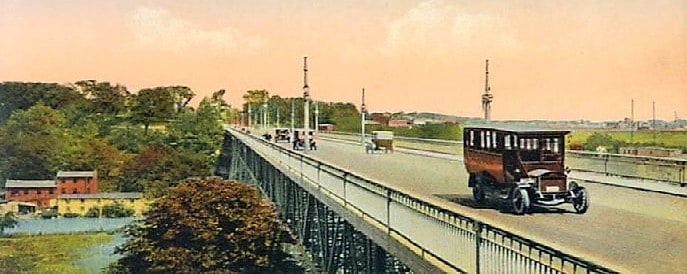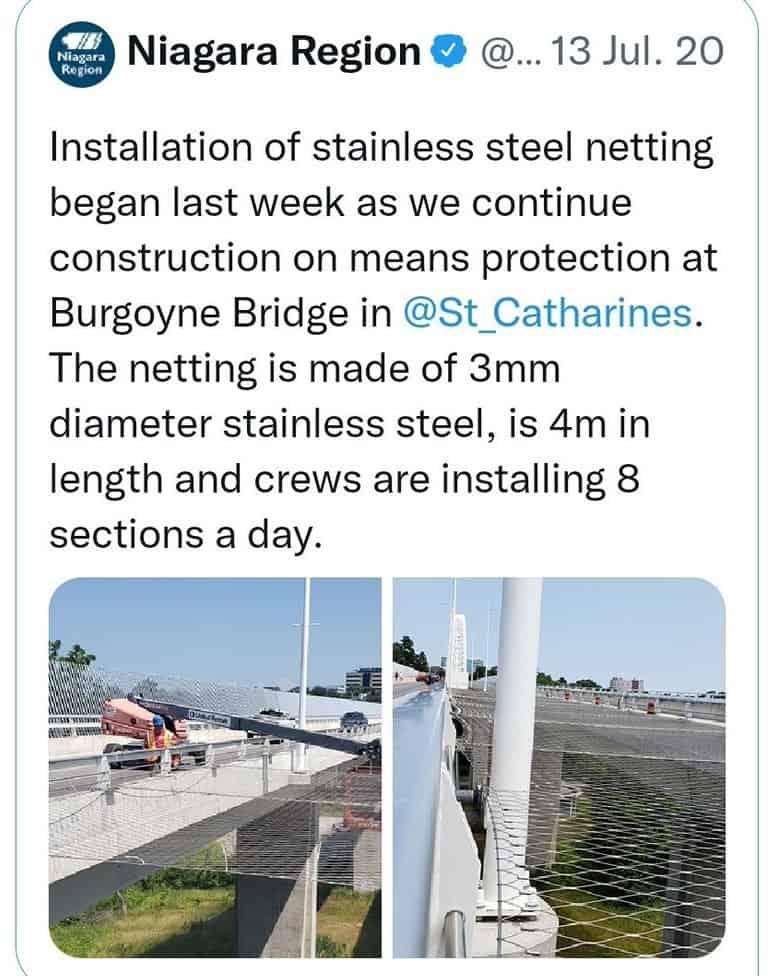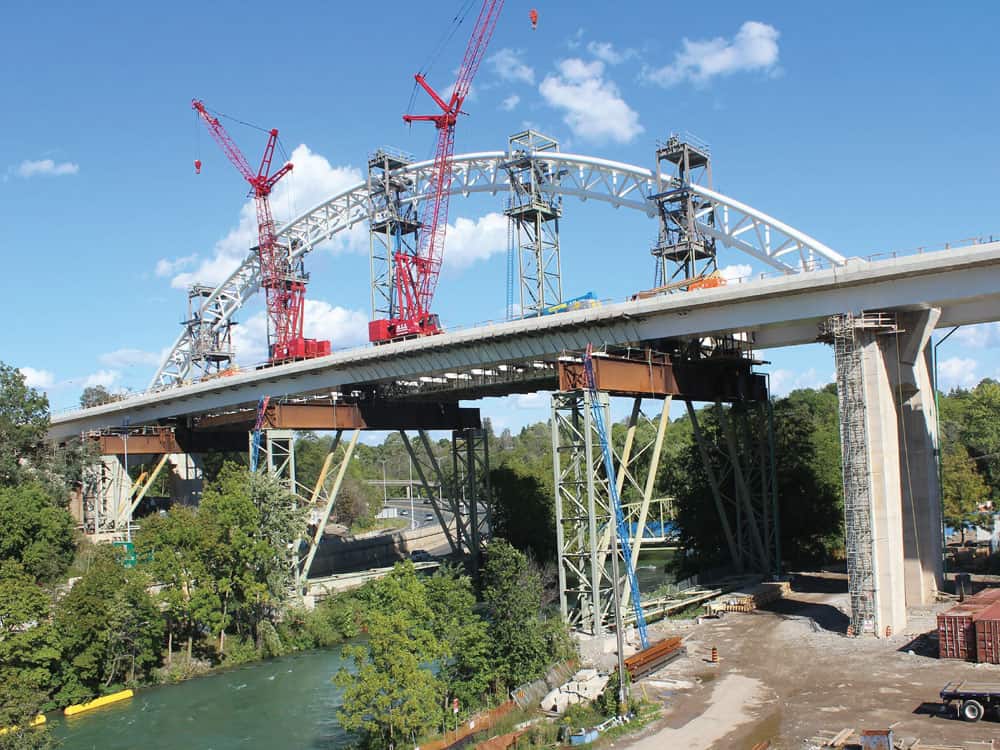That ‘white bridge’ in St. Catharines
Published February 3, 2022 at 11:01 am

Most residents in St. Catharines are very familiar with the big white Burgoyne Bridge on St. Paul Street West.
To out-of-towners, it’s far less familiar. “I passed under the famous St. Catharines Skyway,” one visitor recently told me.
Actually, no. The St. Catharines Skyway, actually called the Garden City Skyway, is a elevated, curved section of the QEW between St. Catharines and Niagara-on-the-Lake that is 40 metres (130 foot) high at its peak and is often shut down during inclement weather.
The Burgoyne Bridge, named after a local newspaper publishing family, was originally constructed in 1915 by the Dominion Steel and Coal Corporation and was built as a connection between St. Paul Street West and the downtown core on St. Paul Street over the Twelve Mile Creek Park valley (and now Highway 406).
At the time, it was considered something of an architectural marvel. While in retrospect, it simply looks like an old-school steel bridge on the valley, a group dedicated to historical bridges has another view.
“The bridge is historically and technologically significant as a large bridge that represents a significant engineering and construction effort, and is also a rare example of its structure type,” said historicalbridges.org. “Additional significance arises from the bridge’s extremely high level of historic integrity.”

The original Burgoyne Bridge, circa 1920. (Photo credit unknown)
In 2010, construction of a new Burgoyne Bridge – the big, white, eye-catching one motorists see today – was recommended by Niagara Region but at a cost of roughly $99 million, it wasn’t completed until late 2016. The huge arch running slightly more than half the length of the bridge set it apart from others in the region.
But once completed, the city ran into a new problem. The low railings were a danger to people feeling depressed or suicidal, as was the 13-foot (four metre) gap between the two bridge on each side of the road. That turned out to be prophetic as the bridge averaged one suicide a month.
At the point, Niagara Region acting Medical Officer of Health Dr. Mustafa Hirji and a group of concerned citizens stepped up before Regional Council, seeking a solution.
One was created when a $2.6 million contract was awarded to Rankin Construction to construct barriers on both sides of the bridge and created a steel mesh web between the two bridges.
The end result was unique. The company built 10-foot high barriers, also in white, tilted at roughly 75-degrees outwards with gaps several inches apart to maintain public safety but not impede visibility for motorists.


Facing east, three young children wave towards downtown St. Catharines. (Photo by Casey McBaker) On the right, Niagara Region shows the installation of the steel mesh webbing between the two bridges.
All of those posts along both sides of the bridge are made with aluminum, apparently a first for bridge barriers in North American, and thus rust-resistant. The region estimated they could last as long as 125 years.
Due to their lighter weight, they could also be installed much easier by the workers, who completed the job in 2020. They were originally meant to be installed in 2019 but needed the Ministry of Transportation’s approval first.
However, while it is a unique addition to the skyline of St. Catharines, not everyone approved of the Burgoyne Bridge construction.
Groused that historical bridge association, “Niagara Region felt that the best way to deal with this landmark heritage bridge was to reduce it to a pile of scrap metal in a $40,000,000 demolition and replacement project that forever destroyed this beautiful heritage bridge and put in its place a structure with no heritage value whatsoever.”

The Burgoyne Bridge in St. Catharines under construction between 2014 and 2016, when it was completed. Directly below, you can see both the Twelve Mile Creek and Highway 406. (Photo: Walters Group Inc)
INsauga's Editorial Standards and Policies








